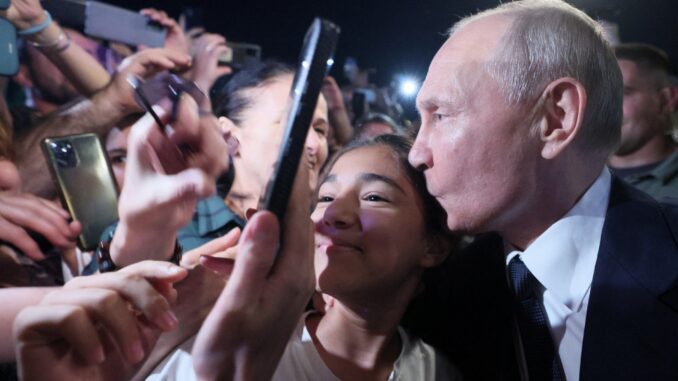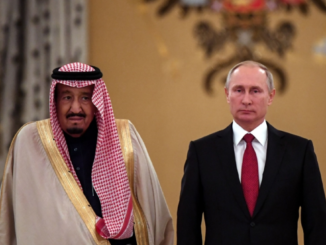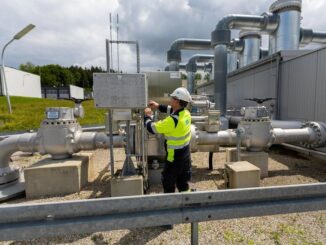
Some political crises are hard to predict. The one that erupted in Russia in late June was in the making for a few months, but despite the public visibility of the conflict between mercenary leader Yevgeny Prigozhin and the Russian Ministry of Defence (MOD), it was hard to know how it would play out.
Prigozhin’s militarised “march of justice” to Moscow, which Russians and the world watched in real time on June 24, was as shocking, unexpected and frightening as the mob attack on the US Capitol that took place on January 6, 2020. In other words, Russia is not unique in experiencing an attempted armed assault on its institutions of power.
But the way the Kremlin chose to handle the crisis was very different from how the US government approached its own back in 2020. In the US, we saw a full-scale public investigation of the January 6 events which was led by the House Select Committee and involved broadcasting public hearings and publishing an 800-page final report. Some 1,000 people were charged with federal crimes in relation to the attack.
In Russia, President Vladimir Putin decided to strike a deal with Prigozhin and send him into exile in Belarus, reportedly along with some of his mercenaries. Any further action that will be taken will likely happen behind the scenes, so observers will have to wait and see what the immediate repercussions will be at the political level.
However, there are some long-term consequences that are already apparent. Russia will continue to fight the war in Ukraine but its forces will be under a single command. It is clear that the Kremlin sees the political spillovers from parallel structures running amok as too costly.
It will make sure to avoid the rise of another Prigozhin – an autonomous military operator who can act with entitlement and control military forces outside the command of the defence ministry. Implementing Defence Minister Sergei Shoigu’s June 11 directive to bring all private formations under his ministry will be the first step.
Chechen leader Ramzan Kadyrov’s Akhmat forces have already signed contracts with the MOD. Does this mean the Kremlin has firmly established control over them?
If Putin’s authority is perceived to be secure, Kadyrov will likely behave. When that is no longer the case, he may become unpredictable. The Kremlin is aware of this and of the fact that the Caucasus is Russia’s most volatile region.
It is no coincidence then that Putin chose to visit Dagestan right after the mutiny and demonstrate his own popularity by appearing in public and engaging a crowd of supporters – a PR exercise that was rather unusual for him. This was meant to counter any perception of his political weakness and confirm his control over the Caucasus.
The Kremlin will continue to take various other measures – outside the public eye – to stabilise the military command-and-control and dismantle Wagner’s structures and operations outside Russia. It will succeed in re-establishing centralised control over all armed forces, but that does not mean it has survived Prigozhin’s failed mutiny unscathed.
Significant systemic challenges – some highlighted by the overly candid Prigozhin – remain and they can further erode the authority of the Russian president and destabilise the Russian state.
The main one concerns the Russian army itself. Doubts about its ability to win the war in Ukraine are inevitably growing in Russian society and among the elites. It is becoming increasingly evident that Russian forces are not going to become more effective at the front and the only options left – to launch a nuclear strike or to cause damage to the Zaporizhzhia Nuclear Power Plant – do not represent an acceptable way out of the war.
Over the past year, Prigozhin repeatedly emphasised the incompetence of defence officials and the inefficiency of the military rank and file. This message resonated widely with the Russian public. In the aftermath of the “march of justice” nearly a third of Russians wanted Shoigu removed from his position as minister of defence.
On top of ever-decreasing support and faith in the military, the Kremlin is facing significant economic challenges. It has had to reorient the economy towards military production and state procurement, with the private sector left to its own devices, operating under increasingly harsh conditions. The collapsing ruble, the growing list of Western sanctions, and the narrowing space for entrepreneurship are taking a toll.
The impoverishment of the Russian people is an unavoidable outcome that has so far been temporarily mitigated by the increase in social payments to the poorest and most vulnerable groups in society. But the ability of the Russian state to keep these financial flows going will waver as the war drags on and it faces a growing budget deficit and diminishing export revenues due to stricter Western sanctions.
From the present vantage point, there is no optimistic scenario for the Kremlin. Absent a drastic change of course, the different pressures – sociopolitical, military, and economic – will only accumulate, causing ruptures and eruptions of various sorts. Russia has not yet reached the proverbial “bottom”, but it is certainly experiencing the boomerang effect of the aggressive war the Kremlin recklessly decided to launch.
The views expressed in this article are the author’s own and do not necessarily reflect Al Jazeera’s editorial stance.
After the mutiny, Moscow is centralising control over all armed forces, but that won’t save it from the looming crisis.



